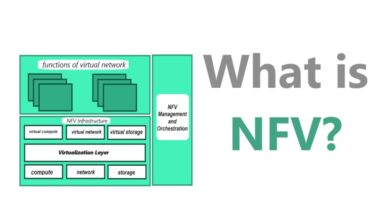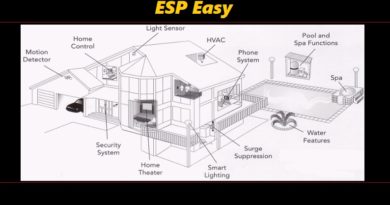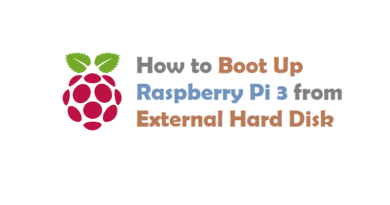Popular Development Boards for IoT
Further to the discussing Most Popular Development Boards for IoT, In developing IoT apps whether it is a small device or a home automation system, the hardware forms the core of the IoT system. The hardware components include: sensors, a remote dashboard, devices to control, servers and a routing or bridge device. These components help devices control and manage actions, control functions like activation, communication, alerts and detecting any issues while performing any specific action.
List of Popular Development Boards for IoT
Arduino Uno R3
Arduino Uno is a microcontroller board based on the ATmega328P (datasheet). It has 14 digital input/output pins (of which 6 can be used as PWM outputs), 6 analog inputs, a 16 MHz quartz crystal, a USB connection, a power jack, an ICSP header and a reset button. It contains everything needed to support the microcontroller; simply connect it to a computer with a USB cable or power it with a AC-to-DC adapter or battery to get started.. You can tinker with your UNO without worring too much about doing something wrong, worst case scenario you can replace the chip for a few dollars and start over again.
“Uno” means one in Italian and was chosen to mark the release of Arduino Software (IDE) 1.0. The Uno board and version 1.0 of Arduino Software (IDE) were the reference versions of Arduino, now evolved to newer releases. The Uno board is the first in a series of USB Arduino boards, and the reference model for the Arduino platform; for an extensive list of current, past or outdated boards see the Arduino index of boards. More info
Recommended: Arduino Tutorials
Raspberry Pi 3
Raspberry Pi is a low cost, credit-card sized computer that plugs into a computer monitor or TV, and uses a standard keyboard and mouse. It is a capable little device that enables people of all ages to explore computing, and to learn how to program in languages like Scratch and Python. It’s capable of doing everything you’d expect a desktop computer to do, from browsing the internet and playing high-definition video, to making spreadsheets, word-processing, and playing games.
What’s more, the Raspberry Pi has the ability to interact with the outside world, and has been used in a wide array of digital maker projects, from music machines and parent detectors to weather stations and tweeting birdhouses with infra-red cameras. We want to see the Raspberry Pi being used by kids all over the world to learn to program and understand how computers work.
Recommended: Raspberry Pi Tutorials
BeagleBone Black
BeagleBoard is a cost-efficient platform for developers and learners of IoT projects. It works on Linux and has ARM Cortex A8 processor that boots in under 10 seconds. The board has built-in Ethernet for network connectivity along with features like USB and HDMI ports to display and other connectivity. Additionally, the BeagleBone Black has a vast community that provides various learning guides, videos and projects that will help to build and learn your IoT solutions.
PocketBeagle is an ultra-tiny-yet-complete open-source USB-key-fob computer. PocketBeagle features an incredible low cost, slick design and simple usage, making PocketBeagle the ideal development board for beginners and professionals alike.
ESP32
If you’re familiar with the ESP8266, the ESP32 is its sucessor. The ESP32 is loaded with lots of new features. The most relevant: it combines WiFi and Bluetooth wireless capabilities and it’s dual core. Some Boards comes with LoRa such as WiFi LoRA 32 (V2) ESP32 | Overview | Introduction.
ESP32 chip specifications –
- The ESP32 is dual core, this means it has 2 processors.
- It has Wi-Fi and bluetooth built-in.
- It runs 32 bit programs.
- The clock frequency can go up to 240MHz and it has a 512 kB RAM.
- This particular board has 30 or 36 pins, 15 in each row.
- It also has wide variety of peripherals available, like: capacitive touch, ADCs, DACs, UART, SPI, I2C and much more.
- It comes with built-in hall effect sensor and built-in temperature sensor.
Recommended: ESP Tutorials
ESP8266
The ESP8266 series, or family, of Wi-Fi chips is produced by Espressif Systems, a fabless semiconductor company operating out of Shanghai, China. The ESP8266 series presently includes the ESP8266EX and ESP8285 chips.
ESP8266EX (simply referred to as ESP8266) is a system-on-chip (SoC) which integrates a 32-bit Tensilica microcontroller, standard digital peripheral interfaces, antenna switches, RF balun, power amplifier, low noise receive amplifier, filters and power management modules into a small package. It provides capabilities for 2.4 GHz Wi-Fi (802.11 b/g/n, supporting WPA/WPA2), general-purpose input/output (16 GPIO), Inter-Integrated Circuit (I²C), analog-to-digital conversion (10-bit ADC), Serial Peripheral Interface (SPI), I²S interfaces with DMA (sharing pins with GPIO), UART (on dedicated pins, plus a transmit-only UART can be enabled on GPIO2), and pulse-width modulation (PWM). The processor core, called “L106” by Espressif, is based on Tensilica’s Diamond Standard 106Micro 32-bit processor controller core and runs at 80 MHz (or overclocked to 160 MHz). It has a 64 KiB boot ROM, 32 KiB instruction RAM, and 80 KiB user data RAM. (Also, 32 KiB instruction cache RAM and 16 KiB ETS system data RAM.) External flash memory can be accessed through SPI. The silicon chip itself is housed within a 5 mm × 5 mm Quad Flat No-Leads package with 33 connection pads — 8 pads along each side and one large thermal/ground pad in the center. Read about For Overview, Datasheet, Technical Reference.
Recommended: ESP Tutorials
Netduino
Netduino is a prototyping platform that is based on the Cortex-M Micro Processor running the .NET Micro Framework (NETMF) v4.3. You can use both windows and MAC platforms to develop their IoT projects. The module has built-in Ethernet and WiFi connectivity for Ethernet and the Wi-Fi board respectively.
Netduino is packed with IO that includes 22 GPIO ports- 6 of which support hardware Pulse Width Modulation (PWM) generation, 4 UARTs (serial communication), I2C, and SPI (Serial Peripheral Interface Bus). It also has ports compatible to Arduino shields that allows developers for various other possibilities.
Intel Edison
The Intel® Edison module is a SoC (System on Chip) that includes an Intel® Atom™ 500MHz dual-core, dual-threaded CPU and an Intel® Quark™ 100MHz microcontroller.
Key features:
- Integrated Wi-Fi, Bluetooth 4.0 LE;
- Support for Yocto Linux, Python, Node.js and Wolfram
Intel Edison is a small module that is embedded with IoT platform offering strong compute performance. The module has Wi-Fi as well as Bluetooth connectivity, so you not need any external modules for network connectivity. This IoT development platform is featured with “Intel Atom CPU” and “32 bit Intel Quark” micro-controller along with other striking features including UART, SPI, I2C, I2S, GPIO and SD card support. So get a jump-start to your IoT project with Intel Edison.
Flutter Wireless
Flutter Wireless is a radio board that has a fast ARM processor with powerful long-range wireless communication that allows network connection among devices with less power consumption. The board is equipped with built-in battery charging and an onboard security chip that provides secure data transmission. These features make Flutter a perfect choice for robotics, wireless sensor networks, consumer electronics, and educational platforms.
Flutter is a programmable processor core for electronics projects, designed for hobbysits, students, and engineers.
Flutter features a fast ARM processor, powerful long-range wireless communication, built-in battery charging, and an onboard security chip, making Flutter an ideal choice for robotics, wireless sensor networks, consumer electronics, and educational platforms.
Particle (Photon and Electron)
Particle (Photon and Electron) gives developers a single platform that provides various built-in features including Wi-Fi, cellular, Bluetooth, and mesh. It has built-in powerful STM32 ARM Cortex M3 and Broadcom Wi-Fi chip that makes the platform easy-to-use and ensure robust connectivity. And the most striking feature of Particle is that is provides cloud platform that enables the devices to be connected through cloud and send and receive data easily from anywhere.
Traditional IoT devices that use Wi-Fi and cellular connectivity depend on the cloud to relay messages between devices. This works great when you’re making a standalone product – but sometimes you need more than that.
Particle Mesh development kits aren’t just connected to the Internet, they’re gateways to the Internet and create a local wireless mesh that other devices can join. These devices work together to ensure that messages get where they’re going, and power products that aren’t possible or economically feasible with Wi-Fi and cellular connectivity.
TESSEL 2
Tessel is a completely open source and community-driven IoT and robotics development platform. It encompasses development boards, hardware module add-ons, and the software that runs on them.
One common misconception is that we’re a company. We’re not! We’re just a collection of (unpaid) people who find it worthwhile to spend our time building towards the Tessel Project mission.
Tessel 2 is an ideal platform yet a cost-effective one providing robust IoT and robotics development platform. It’s hardware platform is powered by Atmel SMART SAMD21 Cortex M0+ processor and the board has built-in Wi-Fi Router SOC that handles with the connectivity. Also, it embeds all the libraries of Node.JS that makes the programming devices easy and in minutes.
Trending
ROCK Pi 4
ROCK Pi 4 is a Rockchip RK3399 based SBC(Single Board Computer) by Radxa. It can run android or some Linux distributions. ROCK Pi 4 features a six core ARM processor, 64bit dual channel 3200Mb/s LPDDR4, up to 4K@60 HDMI, MIPI DSI, MIPI CSI, 3.5mm jack with mic, 802.11 ac WIFI, Bluetooth 5.0, USB Port, GbE LAN, 40-pin color expansion header, RTC. Also, ROCK Pi 4 supports USB PD and QC powering.
ROCK Pi 4 comes in two models, Model A and Model B, each model has 1GB, 2GB or 4GB ram options. for detailed difference of Model A and Model B.
This is best alternative of Raspberry Pi. Visit this: https://iotbyhvm.ooo/rock-pi-4/
I hope you like this post “Popular Development Boards for IoT”. Do you have any questions? Leave a comment down below!
Thanks for reading. If you like this post probably you might like my next ones, so please support me by subscribing my blog.
You may like also:
- How To Create Secure MQTT Broker
- Setting up Authentication in Mosquitto MQTT Broker
- IoT Communication APIs
- IoT Enabling Technologies
- Best Arduino IDE alternatives to start programming
- Best IoT Visual Programming Tools





Pingback: Popular Development Boards for IoT — IoTbyHVM – Explore TechBytes – hashstacks
Pingback: IoT Sensors and Actuators - IoTbyHVM - Bits & Bytes of IoT